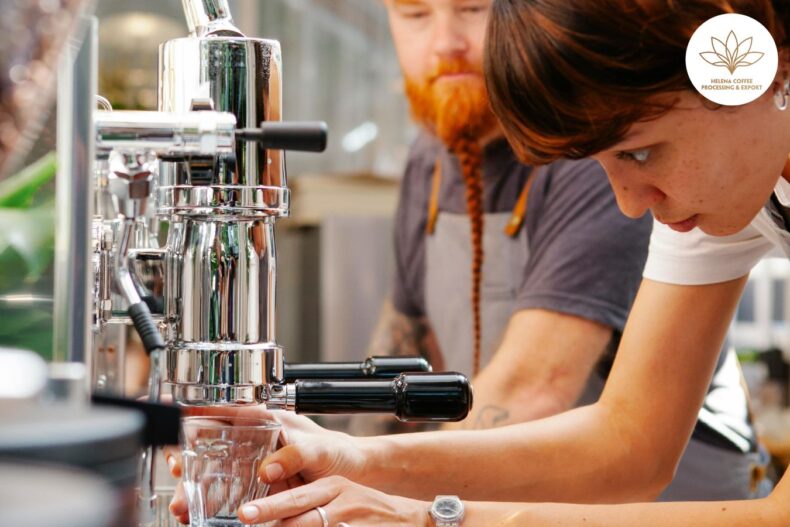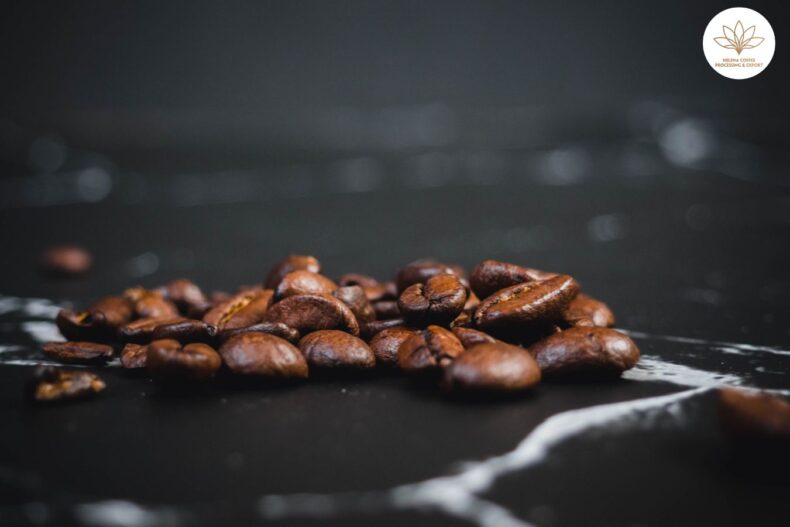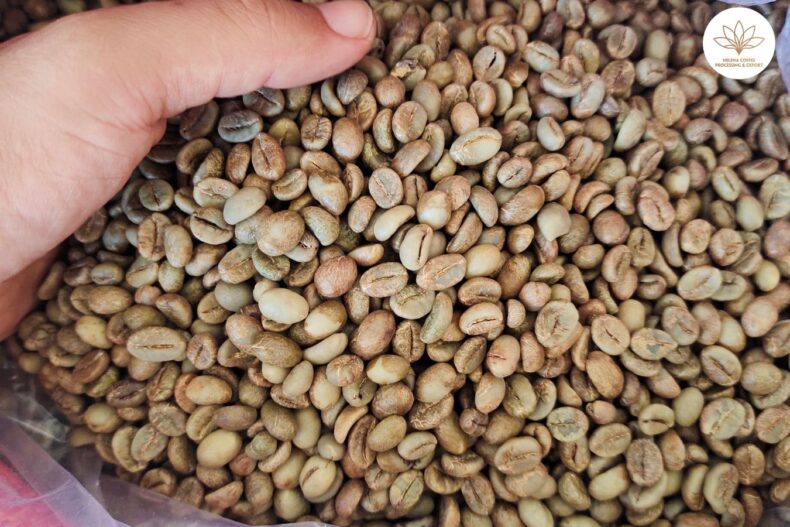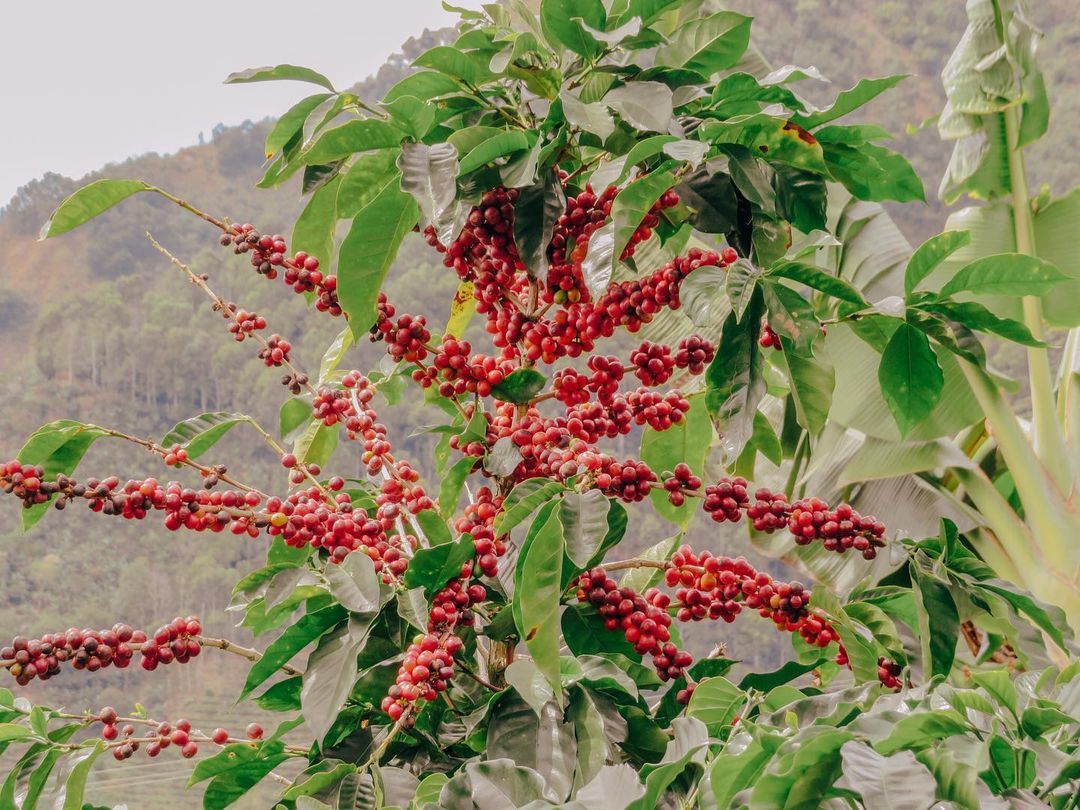
Eleven distinctions between Arabica and Robusta coffee – These are the two most extensive coffee lines in the world today and have entirely different characteristics. So what is that difference? How to distinguish these two lines of coffee. Stay tuned for the following article by Helena Coffee Processing & Export.
Besides information about coffee types, please refer to Helena Coffee’s coffee knowledge overview article if you are a coffee lover. This article helps you have an initial overview, which is the basis for a deeper understanding of coffee.
11 distinctions between two lines of Arabica and Robusta coffee
Conditions for growing Arabica vs. Robusta
Arabica is a coffee variety suitable for highland areas from 900m above sea level, rainfall from 1200-2200mm, temperature not too high, from 15-24 degrees Celsius.

In contrast, Robusta can live well at an altitude of 0 – 900m above sea level. Annual rainfall is about 2200 – 3000 mm, and the temperature is from 18 – 36 degrees Celsius.
The difference in the shape of Arabica and Robusta beans
Arabica coffee beans have a long, oval shape; the slit in the middle is wavy like the letter S.
Meanwhile, Robusta coffee has shorter and smaller beans that look more gourd than Arabica. The groove in the middle is also relatively straightforward.

Caffeine content in Arabica and Robusta
The characteristic of Robusta coffee beans is the bitter taste. It comes from the very high caffeine content, which makes up 2-4% of the total grain mass.
Coffee Arabica is lighter. The caffeine content is only about 1-2%.
The other ingredients in these two types of coffee beans are also very different. The amount of fat in Arabica is 60%, double that of Robusta coffee beans.
The difference in aroma and taste
When enjoying, if you have tasted many types of coffee, you can quickly distinguish between Arabica and Robusta coffee.
- After entering your mouth, Arabica coffee will immediately feel the characteristic sour taste. After a few seconds, there will be a slight bitterness, not too harsh. The aftertaste will have a very intense and seductive aroma when the coffee drifts into the mouth.
- Robusta coffee does not show the same aroma as Arabica. On the contrary, we will immediately feel a robust bitter taste after putting it in our mouths. However, some taste experts can feel the aroma of fruit somewhere in the throat.
Distinguishing the color of coffee beans when roasting
Coffees with a lot of caffeine after roasting will have a lighter color. This is also a way to determine the two coffee varieties we are talking about.
If roasted in the right amount, Arabica will be pretty dark in color, with a lovely shine. Meanwhile, Robusta will be slightly pale and somewhat yellow.

Prices of Arabica and Robusta coffee
Here we consider only the average pure coffee. Then can feel the enormous difference in the price of Arabica vs. Robusta. In terms of market price, Robusta coffee beans are only half the price of Arabica coffee beans.
- Coffee Arabica prices range from 10 USD to 15 USD/kg. Especially in Vietnam, Cau Dat coffee, an Arabica variety, is sold at 450,000 VND/kg.
- Robusta coffee has a lower price, about 4.5 – 7.5 USD/kg.
Coffee yield Arabica vs. Robusta
Coffee variety Tea Arabica is very difficult to cultivate because of its poor tolerance, requiring growers to meet the best geographical and natural conditions. So their productivity will not be high.
Meanwhile, Voi Robusta coffee can grow very well. They are adaptable to most natural conditions. The yield of Robusta is much larger than that of Arabica.
The difference in coffee tree height
- Arabica coffee has a relatively low shape, only 2.5 – 4.5m high, luxuriant branches shaped like tea leaves in Vietnam.
- Robusta is about 4.5 – 6 meters taller. Although not luxuriant, they still give high yields because they have many branches and fruit. The tall tree shape also makes it easier for Robusta coffee to get sunlight and water from nature, so it grows better.
Arabica and Robusta coffee growing areas
Vietnam and some Southeast Asian countries such as Indonesia and the Philippines grow the most Robusta varieties. Vietnam is the largest export source in the world. In addition, this plant is found in many countries in Central and Western Africa and South America.
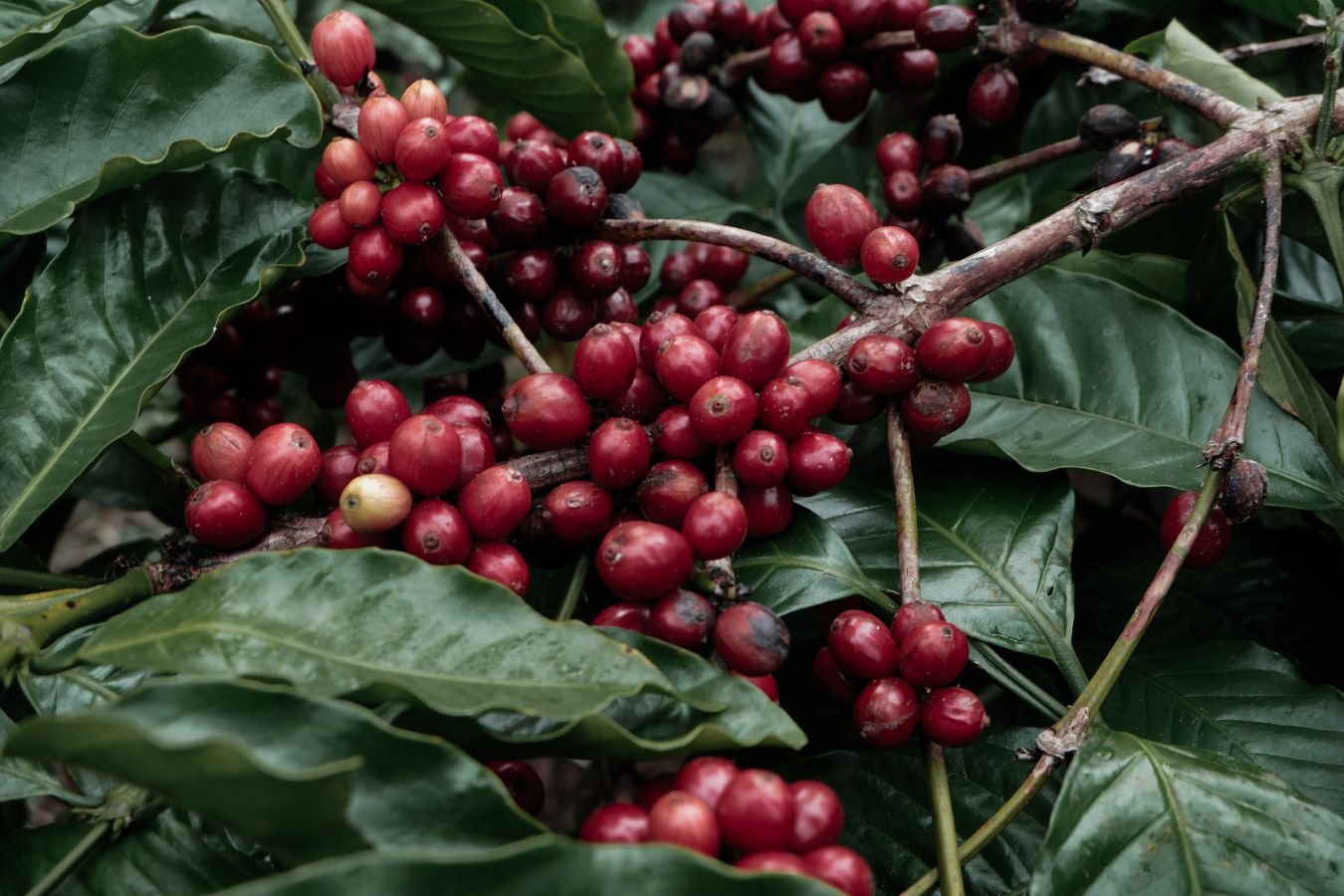
Coffee Arabica tea is most commonly grown in South American countries. Arabica coffee here accounts for more than 60% of world coffee production, mainly in Brazil and Colombia. People even give Arabica its name, Brazilian Milds and Colombian Milds.
Some other places that also grow many varieties of Arabica are India, Ethiopia, Peru, Mexico, Honduras, and Guatemala.
Differences in lipid & sugar content
Arabica contains nearly 60% more lipids and roughly twice the sugar concentration than Robusta. This factor probably also has a significant impact on why we prefer the taste of Arabica.
Chlorogenic Acid (CGA) Variation
Part of coffee is CGA. It is an antioxidant that helps prevent insects fight diseases for plants. Robusta is 7-10% CGA, and Arabica has 5.5-8% CGA.
Arabica and Robusta are the same coffee, but they have a lot of differences, as you know. Depending on each person’s taste, they will choose the type of drink for themselves. However, people often mix these two types of coffee to fully enjoy the coffee’s flavor.
You can order our coffee at:
HELENA COFFEE PROCESSING & EXPORT
- Address: 124 Ngo Quyen, Buon Ma Thuot city, Vietnam
- Phone: +84.789.818.828 (Whatsapp/ Telegram)
- Email: helenacoffee.jsc@gmail.com
- Website: Helenacoffee.vn
